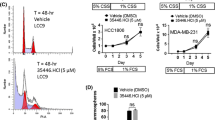Abstract
Transcriptional activity of human estrogen receptor (hER) gene was modulated by competition with double-stranded PCR-generated DNA fragments (decoys) that contain 5′ upstream sequences of the hER gene. Two DNA fragments belonging to the P1 canonical promoter and the P3 distal promoter, 120 and 102 bp in size respectively, were produced by PCR and directly transfected in MCF7 breast cancer cells. After 24 hours transfection, RT-PCR analysis revealed that the 120 bp decoy significantly reduced the expression of the ER gene and estrogen responsive genes (PR and c-myc), whereas the 102 bp decoy increased the ER mRNA level. An ER unrelated PCR product, used as control, had no activity.
The biological activity of these ds DNAs was related to their high stability, binding affinities, and lack of cytotoxicity. These findings suggest that such PCR product decoys may be a non-antisense tool to analyze putative regulatory sequences and to study the function of DNA-binding transcription factors.
Similar content being viewed by others
References
Evans RM: The steroid and thyroid hormone receptor superfamily. Science 240: 889–895, 1988
Beato M: Gene regulation by steroid hormones. Cell 56: 335–344, 1989
Ciocca DR, Vargas Rois LM: Estrogen receptors in human nontarget tissues: Biological and clinical implication. Endocrine Rev 16: 35–62, 1995
Green S, Walter P, Kumar V, Krust A, Bornert JM, Argos P, Chambon P: Human estrogen receptor cDNA: sequence, expression and homology to v-erb-A. Nature 320: 134–139, 1986
DeConinck EC, McPherson LA, Weigel RJ: Transcriptional regulation of estrogen receptor in breast carcinomas. Mol Cell Biol 15: 2191–2196, 1995
Scanlon KJ, Ohta Y, Ishida H, Kijima H, Ohkawa T, Kaminski A, Tsai J, Horng G, Kashani-Sabet M: Oligonucleotide-mediated modulation of mammalian gene expression. FASEB J 9: 1288–1296, 1995
Agrawal S: Antisense oligonucleotides: towards clinical trials. Trends Biotechnol 14: 376–387, 1996
Crooke ST, Bennett CF: Progress in antisense oligonucleotide therapeutics. Annu Rev Pharmacol Toxicol 36: 107–129, 1996
Morishita R, Higaki J, Tomita N, Aoki M, Moriguchi A, Tamura K, Murakami K, Kaneda Y, Ogihara T: Role of transcriptional cis-elements, angiotensinogen gene-activating elements, of angiotensinogen gene in blood pressure regulation. Hypertension 27: 502–507, 1996
Morishita R, Gibbons GH, Horiuchi M, Ellison KE, Nakajima M, Zhang L, Kaneda Y, Ogihara T, Dzau VJ: A gene therapy strategy using a transcription factor decey of the E2F binding site inhibits smooth muscle proliferation in vivo. Proc Natl Acad Sci USA 92: 5855–5859, 1995
Tanaka H, Vickart P, Bertrand JR, Rayner B, Morvan F, Imbach JI., Paulin D, Malvy C: Sequence-specific interaction of αβ-anomeric double-stranded DNA with the p50 subunit of NFκB: application to the decoy approach. Nucleic Acids Res 22: 3069–3074, 1994
Sharma HW, Perez JR, Higgins-Sochaski K, Hsiao R, Narayanan R: Transcription factor decoy approach to decipher the role of NF-kappa B in oncogenesis. Anticancer Res 16: 61–69, 1996
Lee SW, Gallardo HF, Gilboa E, Smith C: Inhibition of human immunodeficiency virus type 1 in human T cells by a potent Rev response element decoy conststing of the 13–nucleotide minimal Rev-binding domain. J Virol 68: 8254–8264, 1994
Lee SW, Gallardo HF, Gaspar O, Smith, C. Gilboa E: Inhibition of HIV-1 in CEM cells by a potent TAR decoy. Gene Ther 2: 377–384, 1995
Clusel C, Meguenni S, Elias I, Vassuer M, Blumenfeld M: Inhibition of HSV-1 proliferation by decoy phosphodiester oligonucleotides containing ICP4 recognition sequences. Gene Expr 4: 301–309, 1995
Piva R, Bianchi N, Aguiari GI., Gambari R, del Senno L.: Sequencing of an RNA transcript of the human estrogen receptor gene: evidence for a new transcriptional event. J Steroid Biochem Mol Biol 46: 531–538, 1993
Keaveney M, Klug J, Gannon F: Sequence analysis of the 5′ flanking region of the human estrogen receptor gene. DNA Sequence-J. DNA Sequencing and Mapping 2: 347–358, 1992
Nilsson B, Abrahmsen L, Uhlen M: Immobilization and purification of enzymes with staphylococcal protein A gene fusion vectors. EMBO J 4: 1075–1080, 1985
Penolazzi L, Facciolo MC, Aguiari GL, del Senno L, Piva R: Direct transfection of PCR-generated DNA fragments into mammalian cells employing ethidium bromide indicator and ultrafiltration. Anal Biochem 248: 190–193, 1997
Sambrook J, Fritsch FF, Maniatis T: Molecular Cloning: A Laboratory Manual. Cold Spring Harbor Lab Press, Plainview, NY, 2nd Ed., 16.30–16.55, 1989
Barbieri R, Giacomini P, Volinia S, Nastruzzi C, Mileo M, Ferrini U, Soria M, Barrai I, Natali PG, Gambari R: Human HLA-DRα gene: A rare oligonucleotide (GTATA) identifies an upstream sequence required for nuclear protein binding. FEBS Lett 268: 51–54, 1993
Bianchi N, Passadorc M, Feriotto G, Mischiati C, Gambari R, Piva R: Alteration of the expression of human estrogen receptor gene by distamycin. J Steroid Biochem Mol Biol 54: 211–215, 1995
Piva R, Rimondi AP, Hanau S, Maestri I, Alvisi A, Kumar VL, del Senno L: Different methylation of estrogen receptor DNA in human breast carcinomas with and without estrogen receptor. Br J Cancer 61: 270–275, 1990
Kraus WL, Katzenellenbogen BS: Regulation of progesterone receptor gene expression and growth in the rat uterus: modulation of estrogen actions by progesterone and sex steroid hormone antagonists. Endocrinology 132: 2371–2379, 1993
Dubik D, Shiu RP: Mechanism of estrogen receptor activation of c-myc oncogene expression. Oncogene 7: 1587–1594, 1992
Evagelatou M, Farrant J: Effect of oestradiol-17 beta on the expression of oestrogen receptor mRNA in human tonsillan cells. J Mol Endocrinol 14: 13–19, 1995
Grandien KF, Berkenstam A, Nilsson S, Gustafsson JA: Localization of DNase I hypersensitive sites in the human oestrogen receptor gene correlates with the transcriptional activity of two differentially used promoters. J Mol Endocrinol 10: 269–277, 1993
Author information
Authors and Affiliations
Rights and permissions
About this article
Cite this article
Penolazzi, L., Lambertini, E., Aguiari, G. et al. Modulation of estrogen receptor gene expression in human breast cancer cells: A decoy strategy with specific PCR-generated DNA fragments. Breast Cancer Res Treat 49, 227–235 (1998). https://doi.org/10.1023/A:1006060523381
Issue Date:
DOI: https://doi.org/10.1023/A:1006060523381




